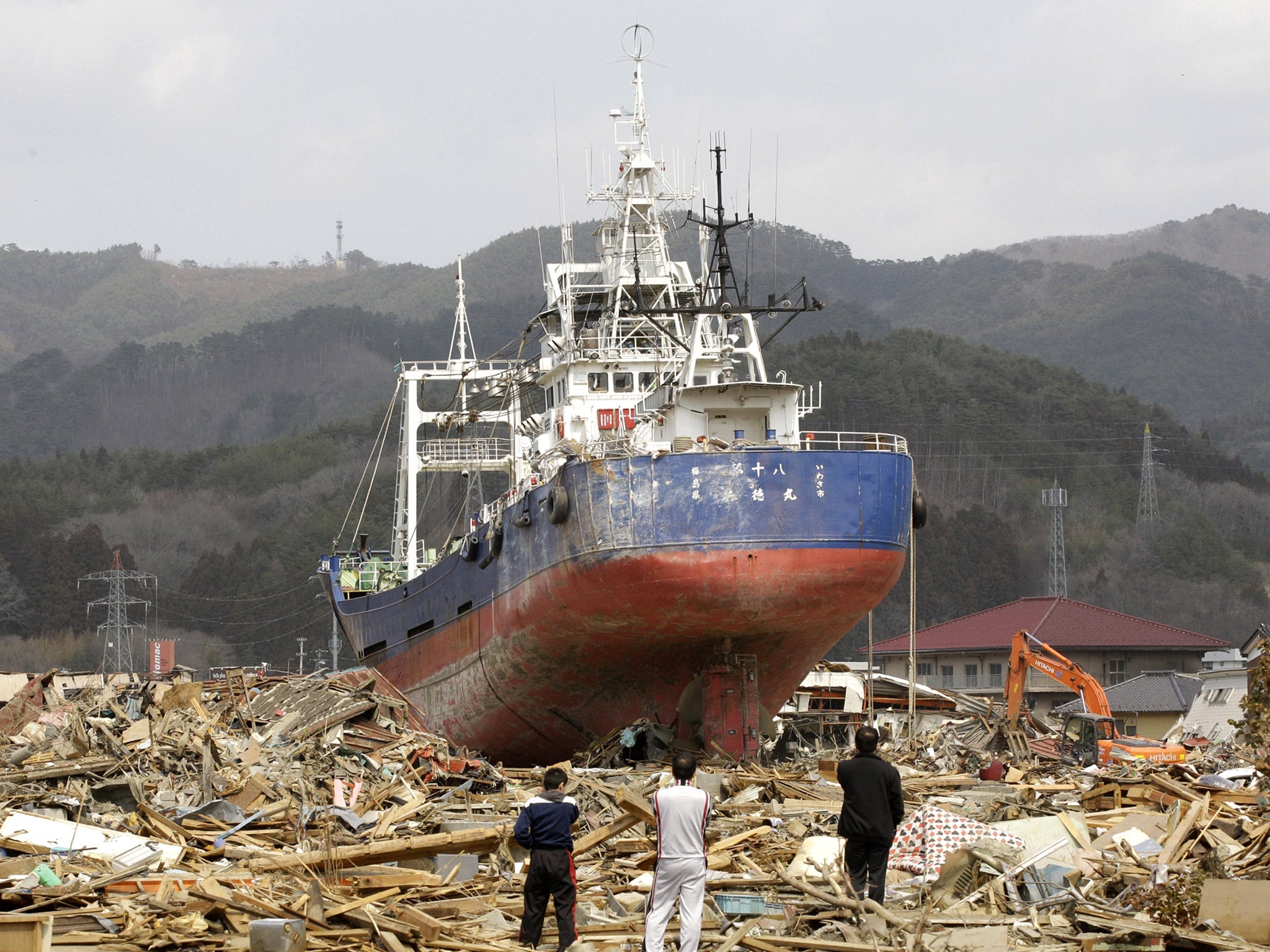Rusting trawler is too painful a reminder of Japan’s 2011 tsunami
City of Kesennuma decides 360-ton tuna boat that was washed a kilometre inshore is not a fitting memorial to the 19,000 victims

Your support helps us to tell the story
From reproductive rights to climate change to Big Tech, The Independent is on the ground when the story is developing. Whether it's investigating the financials of Elon Musk's pro-Trump PAC or producing our latest documentary, 'The A Word', which shines a light on the American women fighting for reproductive rights, we know how important it is to parse out the facts from the messaging.
At such a critical moment in US history, we need reporters on the ground. Your donation allows us to keep sending journalists to speak to both sides of the story.
The Independent is trusted by Americans across the entire political spectrum. And unlike many other quality news outlets, we choose not to lock Americans out of our reporting and analysis with paywalls. We believe quality journalism should be available to everyone, paid for by those who can afford it.
Your support makes all the difference.It was swept up by the fury of Japan’s huge 2011 tsunami and dumped nearly a kilometre from the Pacific. Now after months of discussion about whether a 360-ton tuna boat should be preserved, the city of Kesennuma has decided it is not a memorial but a painful scar and ordered it destroyed.
Debate on the fate of the 200-foot Kyotokumaru, which has been stranded near the city’s flattened coastline for two and a half years, was so heated that the local government had to call a vote. In the end, just 16 per cent opted to keep it. Kesennuma Mayor Shigeru Sugawara was among those who wanted the ship to remain as a memorial to the earthquake and tsunami, and its nearly19,000 victims.
But many more in the city of 70,000 said they could no longer bear to look at its rusting hulk. “It’s just a constant reminder of the terrible disaster,” housewife Yoshimi Abe, 72, said. “When I walk by it every morning, my heart aches.”
The trawler has become an unofficial symbol of the 11 March calamity, drawing visitors from across Japan and the world. Some visitors have planted flowers nearby in a once bustling area that has been wiped clean by the tsunami waves. The ship’s towering red and blue hull can be seen for miles.
The Kyotokumaru is only one of the most potent symbols of the disaster. A 250-year-old pine tree from a forest of 60,000 that once stood by the sea in Rikuzentakata survived the tsunami that killed one-in-12 of the city’s residents. The city authorities finally abandoned attempts to save it this year after estimating it could cost up to 300 million yen.
Scientists are using cloning techniques to produce saplings from the ruined pine forest. The local government wants to grow the saplings in healthy farmland and transplant them back to the region, a project likely to take decades.
Mayor Sugawara said he was disappointed that the trawler would be scrapped. “I wanted to leave a visible symbol of what happened here for generations to come,” he said.
Join our commenting forum
Join thought-provoking conversations, follow other Independent readers and see their replies
Comments